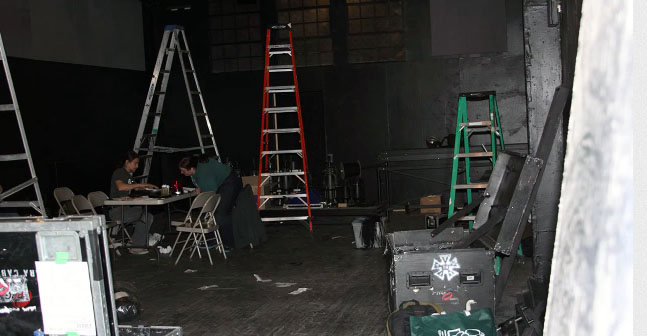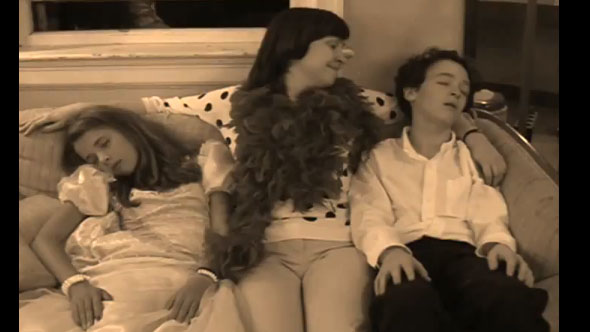You've gotta get up to get down.
“Upstage” and “downstage” are directional terms helpful for theatre performers in describing areas of the playing space. A director uses these words when “blocking” a scene, i.e., mapping out where each actor should stand or sit or move.
“Upstage” means away from the audience, towards the back of the playing area. “Downstage” means close to the audience, near the front of the playing area.
So, if you are starring as the title character in Hamlet and your blocking is to cross far downstage just before you begin your most famous soliloquy, that means you should walk all the way to the edge (or “lip”) of the stage, coming as close as possible to the first row of seats. Once you’re all the way downstage, you can intone, “To be or not to be.”
These terms trace their history to the tradition of “raked” stages, which are tilted, or “raked,” upwards from the front row of the audience towards the back of the performance area. This is one way of creating good sight lines, so that everyone in the house can see actors at the back of the stage. To walk away from the audience on a raked stage, you head up a ramp. In other words, you literally go “upstage.”
When you’re at the highest point of a raked stage, you are naturally more prominent to an audience than another cast member who’s downstage. The crowd is more likely to watch you because you’re elevated highest above them. That’s why an actor who stands behind other performers and does something to draw attention away from them is said to “upstage” his colleagues.
Upstaging can be accidental, or, if you like making mischief, on purpose. More broadly, you can upstage your fellow actors, regardless of who is on a higher level, with ill-timed “stage business” (incidental action done for comic or dramatic effect) that distracts the audience by making them watch you instead of the actors working hard to maintain the focus of a scene.
— Ben Pesner
This video was made by Theatre Development Fund, and it was filmed on location at Theatre Row near Times Square.
Here’s the team:

